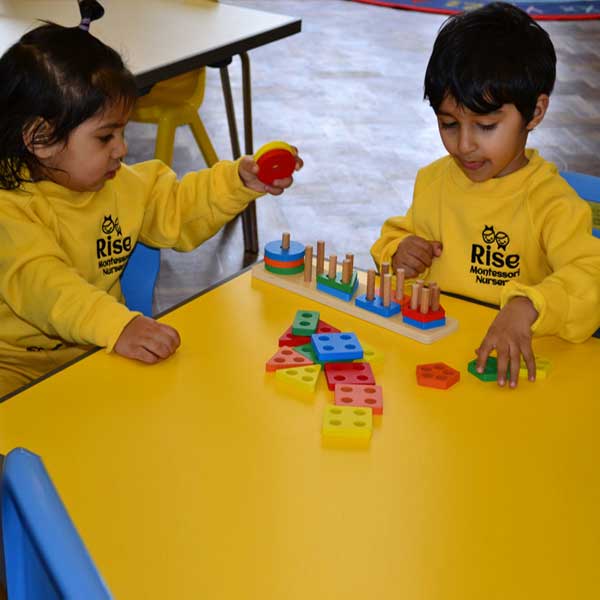I’m glad you’re interested in learning how to apply Montessori principles and practices at home with your child. Montessori is a method of education that fosters the natural curiosity, independence, and creativity of children. It is based on the observation and respect of the child’s developmental needs and interests. Montessori education can be implemented in various settings, including schools, nurseries, and homes. In this blog post, I will share some tips and ideas on how you can create a Montessori-friendly environment at home and support your child’s learning and growth.
Tip 1: Prepare the environment
One of the key aspects of Montessori education is the prepared environment. This means that the environment is designed to meet the child’s needs, interests, and abilities. The environment should be:
- Beautiful: The environment should be aesthetically pleasing, inviting, and orderly. You can use natural materials, plants, flowers, art, and music to create a harmonious atmosphere.
- Simple: The environment should be clutter-free, organized, and accessible. You can use baskets, trays, shelves, and labels to store and display the materials. You can also rotate the materials according to the seasons, themes, or your child’s interests.
- Practical: The environment should offer opportunities for your child to practice real-life skills, such as dressing, washing, cooking, cleaning, gardening, etc. You can provide child-sized furniture, utensils, tools, and clothing that are easy to use and manipulate.
- Educational: The environment should stimulate your child’s senses, imagination, and intellect. You can provide materials that cover various areas of learning, such as language, math, science, art, music, geography, culture, etc. You can also follow your child’s lead and introduce new concepts or challenges when they are ready.
Tip 2: Observe the child
Another key aspect of Montessori education is the observation of the child. This means that you pay attention to your child’s behavior, preferences, interests, and needs. Observation can help you:
- Understand: Observation can help you understand your child’s personality, temperament, learning style, strengths, and challenges. You can also learn about their developmental stages and sensitive periods.
- Respect: Observation can help you respect your child’s individuality, choices, feelings, and opinions. You can also respect their pace of learning and their need for independence.
- Support: Observation can help you support your child’s growth and development. You can offer guidance, encouragement, feedback, and assistance when needed. You can also provide appropriate materials, activities, and experiences that match their interests and abilities.
Tip 3: Follow the child
The final key aspect of Montessori education is the follow-up of the child. This means that you allow your child to explore their environment freely and follow their own interests. Following the child can help you:
- Trust: Following the child can help you trust your child’s innate potential and ability to learn. You can also trust their natural curiosity and motivation to discover new things.
- Empower: Following the child can help you empower your child to become confident, independent, and responsible. You can also empower them to express themselves creatively and authentically.
- Inspire: Following the child can help you inspire your child to love learning and enjoy life. You can also inspire them to pursue their passions and dreams.
These are some of the ways you can apply Montessori principles and practices at home with your child. I hope this blog post has given you some useful information and inspiration. If you want to learn more about Montessori education or find more resources for parents or educators, please visit our website www.risenursery.com. Thank you for reading! 😊

